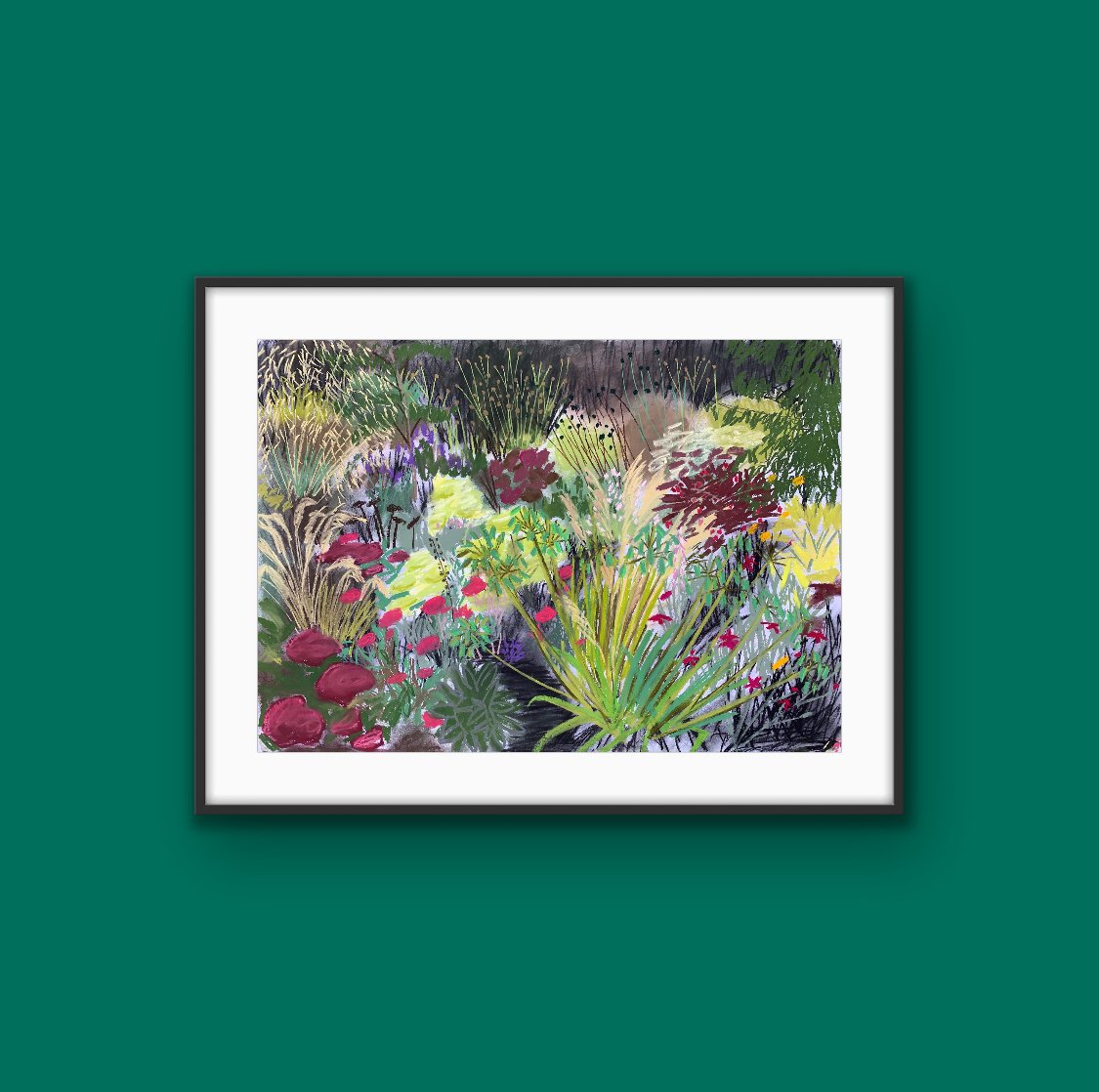Manage Your Mood With Colour!
Colour affects our mood, emotions and behaviour in many ways.
Colour has always surrounded us in both the natural and manmade environments. Landscapes and gardens provide a naturally colourful environment and artworks and interiors offer the perfect opportunity to explore!
Colour affects our mood, emotions and behaviour in many ways. It is widely known that different colours can have various effects on our brains. Studies have found a direct relationship between colour and dopamine which is one of the brain's "feel-good" hormones. In this blog I’ve used my original artworks with corresponding backgrounds to demonstrate some examples. These drawings were made at Arcadia Garden in Sheffield and explore the mood in the garden during various seasons in the year.
What is Dopamine?
Dopamine is a neurotransmitter that is associated with positive feelings of happiness, reward and motivation. It is produced in the brain when we experience something we like such as when we eat food we enjoy or engage in an activity that we find pleasurable. Dopamine is a crucial component of our brain's reward system and plays a vital role in regulating our mood, motivation and behaviour.
What is The Relationship Between Dopamine and Colour?
Studies have found that different colours can trigger dopamine release in the brain. Bright, bold colours such as red, yellow and orange are effective at stimulating dopamine release. These colours are associated with positive emotions such as joy, excitement and happiness, and they can help to boost our mood and motivation. On the other hand muted colours such as greys, browns and beige are less of a trigger to synthesise dopamine . These colours are associated with more neutral emotions, calmness and relaxation and are less dynamic. Greens and Blues are top of the list for producing the highest concentration of dopamine.
How can Colour Improve Everyday Life?
The effective use of colour can have a significant impact on our daily lives. By understanding how different colours can affect our mood and behaviour, we can use colour to create a more positive and productive environment for our home and work place. Creating spaces which control and optimize our moods can significantly enhance our lives. Gardens, artworks or interior colour choices can all make a difference. For example, if you are feeling unmotivated or unproductive, surrounding yourself with bright, bold colours such as red and yellow can help to boost your energy and focus. If you are feeling stressed or anxious choose calming colours such as blue and turquoise. Green is easy on the eyes and can boost concentration and mental harmony.
There is no doubt that colour and dopamine synthesis are connected and different colours can significantly affect our emotions, mood and behaviour. By understanding this relationship we can use colour to create a more positive and productive environment for ourselves and enhance our mood and motivation. Whether you're a home maker, designer, artist or simply someone interested in the science of colour; the relationship between colour and dopamine offers an intriguing glimpse into the workings of our brain and how we respond to the world around us. Colour is an intrinsic element of my work as an artist and this is an exciting aspect to explore. Let me know what you think
To see more colourful artworks visit my website HERE!
Follow me on Instagram HERE!
References Louise Mead



